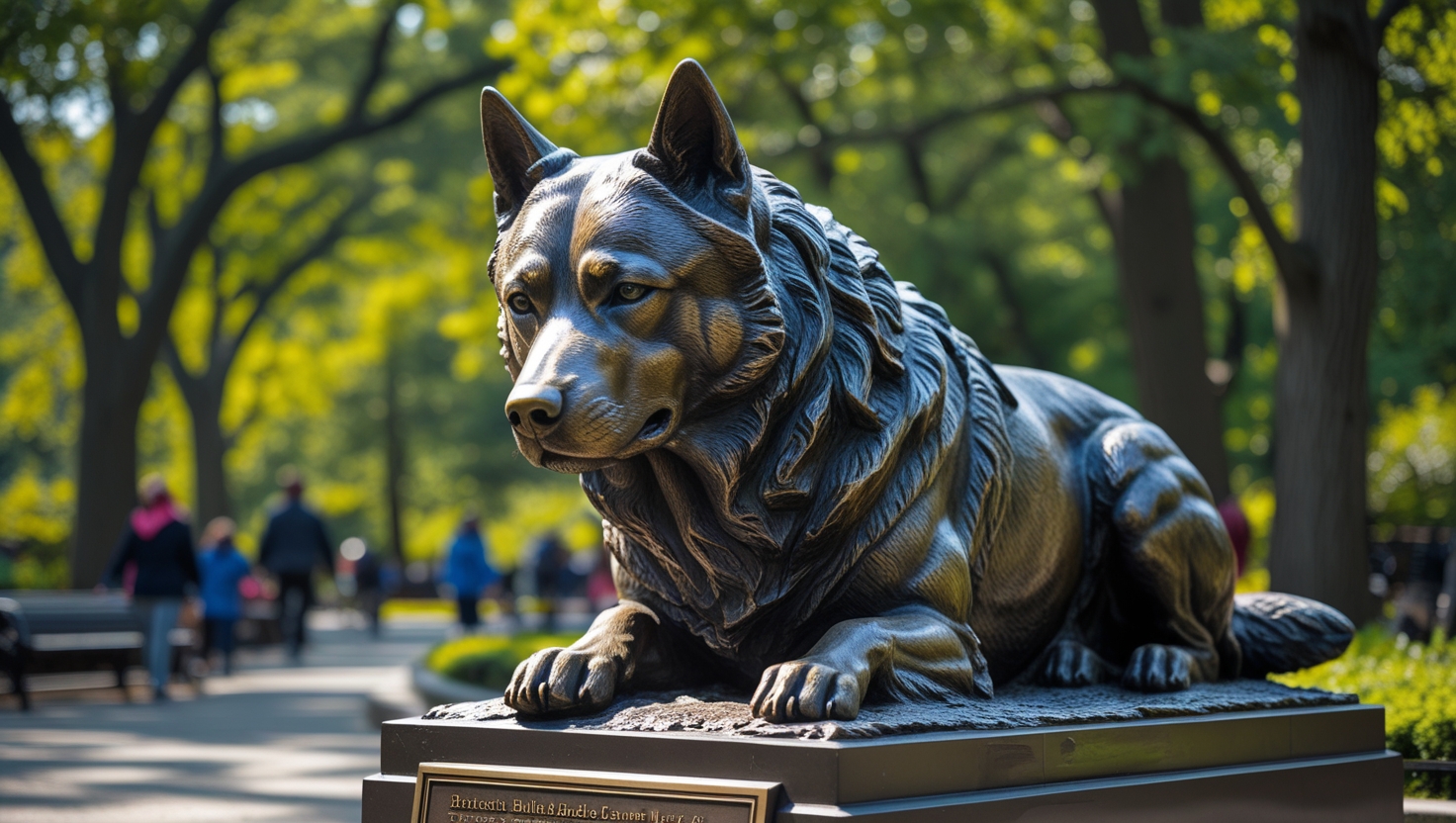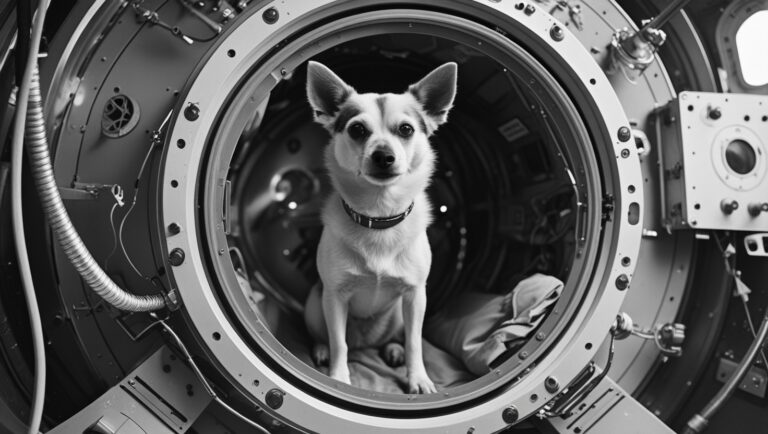Balto and the Serum Run to Nome

Introduction
In the dead of winter in 1925, a deadly diphtheria outbreak threatened to wipe out the isolated town of Nome, Alaska. Cut off by blizzards and sea ice, the town’s survival depended on a desperate race against time to deliver lifesaving antitoxin across nearly 700 miles of frozen wilderness. At the heart of this heroic mission stood a team of sled dogs and their mushers, led in the final stretch by a black-and-white Siberian husky named Balto. While Balto became the face of this incredible event, the Serum Run to Nome was a collective feat of endurance, strategy, and selfless courage. This is the story of the dogs, the men, and the historical moment that immortalized Balto.
The Diphtheria Threat in Nome, 1925
In January 1925, Nome, a remote town on Alaska’s western coast, faced a deadly health crisis. The town’s only doctor, Dr. Curtis Welch, diagnosed several cases of diphtheria, a highly contagious and often fatal disease caused by the Corynebacterium diphtheriae bacterium. With no functional supply of the diphtheria antitoxin left, Nome’s children and elders were at grave risk. As cases escalated and panic set in, Dr. Welch sent urgent telegraphs requesting immediate delivery of antitoxin before a full-blown epidemic could take hold. The window to act was narrow, and the logistics were daunting.
Alaska’s Geography and Winter Challenges
Nome’s isolation during the Alaskan winter was absolute. Situated along the Bering Sea, the town was surrounded by frozen tundra and sea ice. Airplanes of the time were rudimentary, lacked enclosed cockpits, and couldn’t fly in the extreme cold or heavy snow. Ships were icebound, and train lines only extended as far as Nenana, 674 miles away. With temperatures plummeting below –50°F and winds exceeding 60 mph, overland travel was treacherous. Yet, despite the dangers, one mode of transportation was still viable—dog sled teams.
The Birth of the Serum Run Strategy
The emergency response involved devising a relay-style dog sled route, where teams would hand off the 20-pound package of serum across stages from Nenana to Nome. The serum itself arrived in Nenana by train on January 27. From there, over 20 mushers and approximately 150 dogs formed a living chain across the frozen interior of Alaska. The effort would require precise timing, speed, and coordination. Dog teams were already the backbone of rural Alaskan transport, and now they became the literal lifeline for Nome’s survival.
The Role of the U.S. Public Health Service
The U.S. Public Health Service, in coordination with Territorial Governor Scott Bone, oversaw the emergency operation. They calculated that conventional transport methods would take about 30 days, but a coordinated sled relay could deliver the serum in just 6 to 7 days. The antitoxin was packed into a metallic cylinder to protect it from the freezing cold and prevent spillage. The federal government’s decision to support the relay—and the public’s massive interest—turned the Serum Run into a national event.
Sled Dogs in Alaskan Culture and Utility
Long before the serum run, sled dogs had been essential to survival in the Alaskan frontier. These dogs were not just work animals; they were trusted companions and vital partners in a harsh environment. Breeds like the Siberian Husky and the Alaskan Malamute were specifically adapted for endurance, cold resistance, and pulling power. In the 1920s, dog mushing was a respected profession, and mushers were often celebrated in their communities for their skill and bravery. The Serum Run was not the first time dog teams delivered medicine, but it became the most famous.
Leonhard Seppala and Togo: The Unsung Heroes
Among the most critical figures in the serum run was Leonhard Seppala, an experienced musher from Nome who was chosen for the most dangerous and longest leg of the journey. His lead dog, Togo, was a seasoned 12-year-old Siberian Husky renowned for his intelligence and endurance. Together, Seppala and Togo covered over 260 miles, including a crossing of the deadly Norton Sound, a frozen stretch of sea ice that could have broken beneath them at any moment. Despite their monumental contribution, Togo would initially be overshadowed by another dog—Balto.
Balto and Gunnar Kaasen: The Final Stretch
The final handoff in the serum run went to Gunnar Kaasen, a Norwegian-American musher, and his lead dog Balto, part of Seppala’s kennel. Balto was not Seppala’s top lead dog and had limited racing experience. Still, Kaasen chose him to lead the final 55-mile stretch from Bluff to Nome. Facing blinding blizzards and near-total darkness, Kaasen relied on Balto’s instincts to stay on the trail. In the early hours of February 2, 1925, Kaasen and his team staggered into Nome with the precious serum intact. Balto had led the team through the storm—securing his place in history.
Also read this Famous Historical Dogs
Arrival in Nome: February 2, 1925
The arrival of the serum sparked jubilation throughout Nome. The medicine was immediately distributed, and further cases of diphtheria were prevented. Not a single patient who received the serum died. The daring mission had succeeded, and the town was saved. Kaasen and Balto became instant heroes. Telegraphed reports quickly spread across the United States and Europe. People were amazed not just by the speed of the delivery but by the raw courage of the dogs and mushers who battled the elements. Balto, the dog who had led the final charge, became the focus of the public’s admiration.
Balto’s Instant Fame
Within weeks, Balto was a global sensation. He and Kaasen were invited to New York City, where they participated in a celebratory parade and were honored with medals. Newspapers ran stories about Balto’s bravery, and he became the canine face of American courage. He was featured in books, newsreels, and even early radio broadcasts. In December 1925, a bronze statue of Balto was unveiled in Central Park, New York, with the inscription: “Endurance, Fidelity, Intelligence.” Balto himself attended the unveiling—a living legend among thousands of cheering spectators.
Why Togo Was Initially Overlooked
While Balto captured the headlines, many within the mushing and veterinary communities knew that Togo and Seppala had done the lion’s share of the work. Covering five times the distance of Balto’s team and braving the deadliest part of the trail, Togo’s effort was monumental. However, because Balto completed the final leg into Nome, he became the face of the operation. Seppala was reportedly frustrated that Togo was overlooked. In later years, Seppala worked to ensure Togo received the recognition he deserved, calling him “the real hero of the serum run.”
Balto’s Later Years and Public Display
Following his rise to fame, Balto and the rest of Kaasen’s sled team were taken on a nationwide tour. However, after their popularity waned, the dogs were sold to a vaudeville sideshow in Los Angeles, where they were poorly treated. In 1927, Cleveland businessman George Kimble led a successful campaign to purchase and relocate the dogs. Balto lived the rest of his life at the Cleveland Zoo, where he was treated with dignity. When he died in 1933, his body was taxidermied and placed in the Cleveland Museum of Natural History, where he remains a popular exhibit.
The Balto Statue in Central Park
The statue of Balto in Central Park has become one of New York’s most cherished landmarks. Children climb on it, tourists photograph it, and visitors from around the world read its plaque. The statue has become a symbol not only of Balto but of all the dogs and mushers who risked their lives during the serum run. It stands as a permanent tribute to loyalty, teamwork, and survival against impossible odds. The statue has also been featured in films, including the 1995 animated movie “Balto,” which reintroduced the story to new generations.
Togo’s Recognition in Retrospect
In recent decades, there has been a renewed appreciation for Togo’s pivotal role. In 2001, Togo’s body was mounted and placed on display at the Iditarod Trail Sled Dog Museum in Wasilla, Alaska. In 2011, a bronze statue of Togo was erected in Seward Park, New York. The 2019 Disney+ film “Togo” further cemented his legacy by portraying the true extent of the journey he and Seppala undertook. Today, both Balto and Togo are recognized for their respective contributions to the serum run, each representing a different aspect of heroism—execution and endurance.
The Legacy of the Serum Run in Modern Culture
The story of the serum run continues to inspire. In 1973, the first Iditarod Trail Sled Dog Race was held in Alaska to commemorate the historic journey. Covering over 1,000 miles from Anchorage to Nome, the race retraces portions of the serum run trail. It remains one of the most grueling endurance events in the world. Documentaries, children’s books, and academic studies continue to explore the many facets of the serum run—from its logistical brilliance to the cultural symbolism of its canine heroes.
Analyzing the Role of Dogs in Crisis Response
The serum run illustrated the incredible capability of working dogs in crisis scenarios. Unlike machines, sled dogs could navigate treacherous terrain, react to shifting weather conditions, and bond with human handlers. Their biology—thick fur, large lungs, and team mentality—made them perfect partners in Arctic survival. The event remains one of the most dramatic examples of animal-human collaboration in the face of overwhelming adversity, offering lessons even in modern disaster logistics and wilderness rescue operations.
The Science of Diphtheria and the Vaccine Era
Diphtheria was once among the most feared childhood diseases. It spreads via respiratory droplets and can cause airway blockage, heart failure, and death. The antitoxin serum used in 1925 was derived from horse blood and needed refrigeration and rapid delivery. The Nome outbreak underscored the urgency of disease response infrastructure, especially in isolated regions. Today, diphtheria is rare in the developed world due to widespread vaccination, but the serum run remains a potent reminder of the fragility of medical supply chains.
Public Memory and Historical Accuracy
For decades, the Balto vs. Togo debate was viewed as a rivalry. Today, most historians agree that both dogs played crucial roles, and their handlers demonstrated exemplary courage. The media’s simplification of the story led to Balto being lionized, while Togo was overlooked. However, evolving scholarship and media portrayals have helped correct the record, highlighting the depth and complexity of the serum run and the many figures involved.
Educational Uses of the Balto Story
Teachers across disciplines use the Balto story to teach teamwork, perseverance, biology, geography, and ethics. The tale appears in school curriculums, educational media, and museum exhibits. It offers an accessible and emotionally engaging entry point to discuss broader themes like emergency planning, animal capabilities, and public health history. Balto remains a central figure in this educational effort, with his image used to spark curiosity and critical thinking.
Dogs as Symbols of Courage
Throughout history, dogs have been symbols of loyalty, courage, and self-sacrifice. From military service animals to search-and-rescue heroes, they consistently demonstrate an ability to act under pressure. Balto’s story is part of a larger narrative that includes war dogs, guide dogs, and therapy animals—each expanding our understanding of what dogs can contribute to human well-being. In the pantheon of heroic animals, Balto stands as one of the most enduring.
Conclusion
The Serum Run to Nome was not the accomplishment of one dog or one man, but a collective feat of animal-human cooperation, bravery, and innovation in the face of disaster. Balto may have become the icon, but the true heroes include every dog and musher who faced the Alaskan winter to save a town from tragedy. Their legacy lives on in statues, races, films, and the continued admiration of people around the world. In Balto’s eyes—resolute, frost-covered, and determined—we see the spirit of survival.





